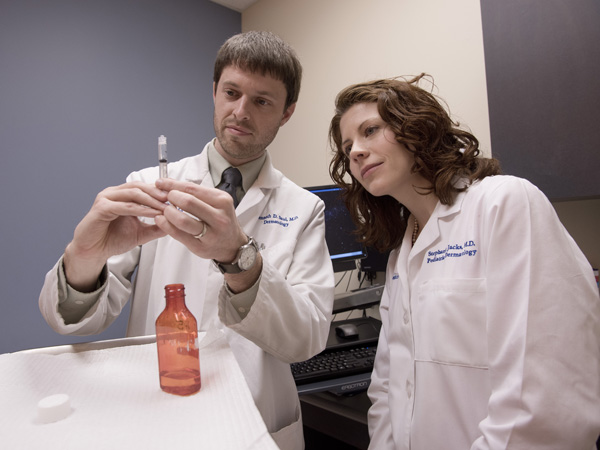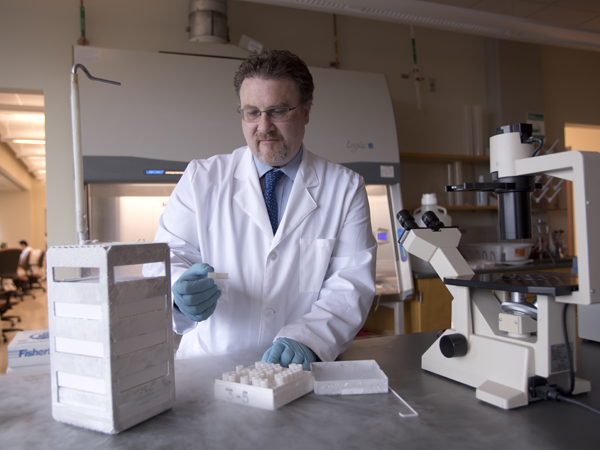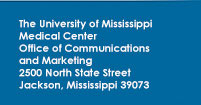|
One hundred sixty-seven miles of road separate the University of Mississippi campuses in Oxford and Jackson. Despite the distance, scientists at both institutions are paving paths to new discoveries through research collaborations.
|

|
Dr. Stephanie Jacks remembers the day when a medication error could have meant illness or even death for a tiny patient with hemangiomas, or reddish growths on the skin known as “strawberry marks.”
|
|
Dr. Mary Currier, State Health Officer for Mississippi and a 1983 graduate of the UMMC School of Medicine, has received the American Medical Association's highest honor for elected officials and government employees. Presented at a Feb. 23 recognition dinner in Washington, D.C., the Nathan Davis Award for Outstanding Government Service went to Currier, a former UMMC faculty member, for her efforts to advance public health. “I appreciate the relationship UMMC has with the Mississippi State Department of Health, and Mary's leadership for our state,” said Dr. LouAnn Woodward, vice chancellor for health affairs and dean of the School of Medicine.
|

|

|
A new energy management initiative is literally shining a new light on efficiency and safety at the University of Mississippi Medical Center.
|
|
The Medical Center is proud to announce the following additions to its faculty and leadership staff:
|

|


























